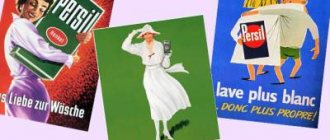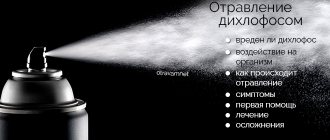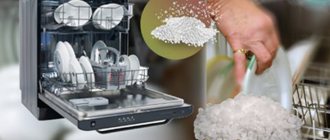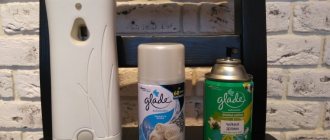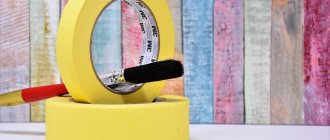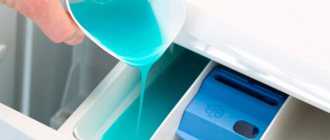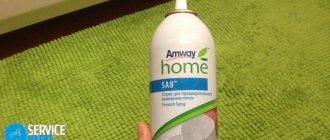Shiny coins in numismatists’ collections are the result of using Asidol. The cleaning fluid is used by jewelers. The environment contains carbon dioxide and ammonia, which requires the use of personal protective equipment during work. Has a pungent odor. Not suitable for aluminum and painted metal objects; It’s also better not to take risks with antique coins, as scratches will remain due to the abrasive particles they contain. Price 150 rub.
If you are faced with the painstaking task of cleaning metal products, and available folk remedies are powerless, “Asidol” will come to the rescue. Years of use have confirmed high quality and effectiveness. It has its own price, and use does not require special knowledge or skills.
Description
This product is an oily liquid. Most often it is sold in small bottles with a spray. It can be white or dark brown, depending on the quality of purification and processing of the original substances. The product evaporates quickly, causing the room to fill with an unpleasant, pungent odor in a matter of minutes. It is caused by the fact that the product contains active detergent additives. "Asidol-M" is obtained by treating oil waste with sulfuric acid.
Asidol-M
"Asidol-M" can not always be found in stores. Therefore, the product is often replaced with improvised substances. Among them:
- toothpaste or tooth powder dissolved in water;
- liquid hand soap mixed with surface cleaners;
- soda dissolved in a small amount of water to make a paste;
- water remaining after boiling potatoes.
Where is it used?
Numismatists working with bimetallic copper-nickel coins most often need “Asidol”. The drug effectively removes dirt, plate grease, oxidation, and sometimes a layer of corrosion. Because abrasive varnish particles leave microscopic scratches that are invisible to the eye but visible under a magnifying glass, the value of antique and precious coins may decrease. Therefore, for rare cases of cleaning hazardous liquids.
Jewelers use this cleaner to clean items made from precious metals.
They know how to use Asidol soldiers. Since the days of the Soviet army, the military cleaned brass buttons, buckles, and rubbed the belt buckle to make it shine. The ideal result was considered the moment when the soldier saw his reflection on the board on the military belt.
Tips for using household cleaning fluid:
- cleaning silver (dishes, cutlery, figurines, etc.);
- polishing of non-ferrous metals, stainless steel elements;
- cleaning chrome and nickel surfaces;
- removal of impurities from steel, copper structures, internal elements.
“Asidol” is used to process any metal except painted and aluminum.
Application
The product contains components that allow it to be used for cleaning many products. With the help of "Asidol-M" you can:
- Polish items made of non-ferrous metals and stainless steel to a shine.
- Clean items coated with chrome or nickel.
- Remove dirt and tarnish from jewelry made from precious metals.
- Remove the blackened layer from silver items.
- Wipe the surface of the coins. It must be borne in mind that the chemical composition can only be used to remove contaminants from modern specimens. Asidol-M is not suitable for old metal money. It contains many active abrasive substances that can damage a rare coin. Micro scratches on light metal money can be polished out. But if you clean the yellow ten-ruble coins that are currently in use with the substance, they will acquire an unpleasant rusty color.
Expert opinion
Sidorenko Alexander
Antiques appraiser, numismatist
"Asidol-M" is completely unsuitable for cleaning aluminum products. Also, it cannot be used on painted items.
Cleaning coins with Asidol
One of the most common coin cleaning products remains Asidol, which easily and quickly removes surface patina from inexpensive coins, including modern bimetal and anniversary issues. The male population of our country often encountered Asidol for the first time during their military service. This is what soldiers use to give a bright shine to tarnished brass plaques, and the regimental band simultaneously polishes wind instruments made from the same material with it. Let's get to know "Asidol" better to understand how it can turn into a good assistant for us, making cleaning coins very easy.
What is "Asidol"?
Asidol is extracted from waste treated with sulfuric acid during the complete decomposition of sodium naphthenates (purification of petroleum distillates with alkali), obtaining an oily, dark brown, water-insoluble liquid with a pungent odor. The scope of its application is quite wide and beyond numismatics. It is an antiseptic, a solvent, and an emulsifier.
Examples of bottles "Asidol-M" and "Asidol-M"
However, for numismatists, this liquid mass with an abrasive material, which has a pungent odor, is sold in the form of a whitish-milky substance. After all, collectors do not buy the original product, but “Asidol-M” (can also be written in Latin Asidol-M), which contains surfactants, an abrasive component and additives. It is produced in Russia, so it is not difficult to get. And the purchase will not require a lot of money. "Asidol-M" is used for cleaning metal products, including nickel and copper. It copes well with a thin film of oxides, dirt, grease, and also successfully removes shallow rust.
"Asidol-M+"
In addition, “Asidol” marked “M+” is widely represented on the market. In addition to surfactants and abrasives, it also contains ammonia. It is recommended to work with Asidol in a ventilated area due to the presence of active additives and a pungent odor in its composition. The safest way to clean coins is to wear protective gloves. However, if there are no scratches, wounds or other damage on your hands, and you only need to clean a few coins, then you can do this without gloves.
What coins can be cleaned with Asidol?
If the coin is made of stainless steel, non-ferrous or precious metals, then “Asidol” is suitable for cleaning them. This category includes copper-nickel and copper-zinc alloys. In addition, it is suitable for working with chrome or nickel plated objects. An important advantage of Asidol is that when cleaning coins, it also polishes their surface to a shine. Thus, “Asidol” is applicable to all everyday coins of the USSR made of cupronickel, aluminum bronze, nickel silver and brass. Coins of the Russian Federation, including commemorative circulation issues, can also be cleaned with it without fear. This applies to both early coins and modern coins made of steel coated with nickel or brass.
Silver coins of normal minting quality
"Asidol" also removes the darkened layer from silver objects. It can be used to clean silver coins if they are everyday items or collectible coins of normal minting quality. However, Asidol is not suitable for those who do not accept abrasive products. After cleaning, many microscopic scratches will remain on the surface of the coin. They may be invisible to the naked eye, but when magnified they are clearly visible. So the coins cannot be returned to their original condition during the cleaning process, although their appearance will most often undergo changes for the better.
What coins cannot be cleaned with Asidol?
Silver Proof coin in patina
It is strictly forbidden to use “Asidol” for collectible coins that require delicate handling. These, for example, include all coins minted using Proof technology. They are cleaned only with specialized products that do not contain abrasives.
Silver Proof coin before and after cleaning
For those who do not listen to the recommendations, we will simply show what cleaning such a coin with Asidol can turn into. Yes, it will remain silver. But the collectible component will be completely lost. After cleaning, it will already be an ingot, trading at the price of the metal on the stock exchange.
10 pfennig GDR made of aluminum
After using Asidol on copper-nickel or copper-zinc and achieving good results, there is often a desire to try this product for cleaning other metals and alloys. From the list of possible candidates, immediately exclude aluminum coins. A chemical reaction with Asidol will greatly spoil their appearance. To clean aluminum, use other products.
25 rubles “Sochi” (color)
You should not clean copper-nickel coins with fragmentary coloring with Asidol. An example here would be colored 25-ruble coins that were removed from a blister and stored in improper conditions. It’s worth remembering right away that Asidol is not applicable for dyed items.
Bimetallic coin in stamp shine with a small number of small spots
If small stains or darkening appear on UNC high grade coins, refrain from using Asidol. Yes, after cleaning, the stains will disappear, and the coin will shine in a new way, since “Asidol” is also a polishing paste. But it will no longer be that original stamped brilliance that attracts picky collectors. Cleaning will remove it forever, and small scratches, visible under magnification, will no longer allow this coin to be assigned one of the highest degrees of preservation in the future. “Asidol” is used to clean coins with VF or lower.
How to clean coins with Asidol?
During long-term storage, the abrasive material precipitates, so before cleaning the bottle must be shaken vigorously several times to achieve uniformity of the composition. Only dry coins can be cleaned. Water sharply reduces the concentration of surfactants, and the abrasive components stop working. Before cleaning, either wipe the coins dry, or (which is better) pre-dry them.
Coins before cleaning
For cleaning, we selected coins from the following materials:
- 1 ruble model 1997 (nickel silver);
- 20 kopecks 1932 (nickel silver);
- 3 kopecks 1975 (brass);
- 10 rubles, model 2009 (steel with brass coating);
- 50 rubles 1992 (bimetal);
- 20 rubles 1993 (steel with copper-nickel coating).
Everything is relative. Therefore, of the shown pairs of 50 rubles from 1992 and 20 rubles from 1993, one coin will be cleaned, and the second will remain unchanged.
10 rubles (bimetal) before cleaning
Russian numismatists often remove dark patina on bimetal using Asidol. Therefore, we will additionally take four 10 ruble coins from 2005 “Moscow” and clean three of them with this product. At the same time, let's see how it copes with rust on the same bimetal. To do this, we will need another “Moscow” and 10 rubles from 2014 “Chelyabinsk Region” (we are looking for rust in the direction of three hours).
Coins after cleaning
There are two cleaning methods available. In one of them, coins are immersed in a solution. In the second, they are applied on top. Some instructions indicate to wait just one minute, others advise waiting for the product to dry. When the dirt and oxide film have dissolved, rub the coin with a brush with short bristles or a regular rag to remove the dissolved layer. A comparison of polished copies with coins (50 rubles from 1992 and 20 rubles from 1993) that remained uncleaned shows us the effect of “Asidol”.
10 rubles (bimetal) after cleaning
After finishing cleaning, be sure to rinse the coins to remove any remaining Asidol from the coin’s hard-to-reach cavities. Some people use only distilled water, while others are fine with running water. After washing, be sure to wipe the coins dry. Usually one cleaning is enough. However, in the photo above you can see that some of the ten-ruble notes partially retained dirt (they are visible as dark fragments). Therefore, cleaning can be repeated, paying special attention to these places. In comparison with an uncleaned ten-ruble note, it is clear that the brass ring, after treatment with Asidol, brightened and shone. Everyone decides for himself what coins he wants to see in his exhibition: plainly shiny or with a natural patina.
Brass coins after processing may not look golden yellow, but lemon-pale, since the ammonia contained in Asidol affects this alloy in this way. However, the induced shine and pale color will not remain forever. After some time, the oxides will begin to cover the coin again. If you want to quickly return a more natural appearance to a brass coin, then you should take the coins out into the open air and keep them exposed to sunlight for some period.
After cleaning, we were convinced that Asidol improves the appearance of coins by removing dark and cloudy patina from the surface. But you should use it only for those metals and alloys that are indicated in the instructions, so as not to be disappointed. And this product is used only for cleaning simple coins. Protect rarities from abrasives by purchasing specialized liquids that are gentle on coins.
Compound
The main chemicals contained in this cleaner are monobasic carboxylic acids and mineral oils. “Asidol-M” also contains salts of sodium naphthenic acids, surfactants, abrasives harmless to humans, ammonia and synthetic wax.
If a product similar to Asidol-M was created at home, then the mixture may contain:
- baking soda mixed with dishwashing detergent;
- hydrogen peroxide and ammonia;
- acetone, potato broth and vinegar.
How to make asidol with your own hands?
In order to make such a cleaning product at home, you can use various combinations of substances. For example, the simplest thing is tooth powder, which is applied to a moistened brush and with which the product is polished to the desired state. The second popular home method for cleaning small dirt from a metal surface is a mixture of baking soda and dishwashing detergent. The composition must be applied to the surface of the item, rubbed and rinsed off, and then wipe the item dry to avoid streaks.
An effective remedy is a mixture of hydrogen peroxide, water and ammonia. Peroxide and water are taken in a 1:1 ratio, and ammonia is added in a small amount. Use the resulting mixture to lubricate the contaminated object and leave it overnight, after which you must wipe it dry with felt.
A mixture of acetone, ammonia and heated acetic acid is often used. But these products are dangerous to use and after prolonged contact with a metal product they can damage it. In order to clean silver jewelry, a decoction of potatoes is suitable. You need to immerse the product in a hot broth for half an hour, then rinse and wipe dry.
How to clean metal products?
The use of any chemical substance, including Asidol-M, requires compliance with safety regulations. The product should be used in a well-ventilated area so that the person does not feel sick from the strong odor. Before work, wear rubber gloves to prevent irritation from the chemical composition on the skin of your hands. Only when following precautionary measures do they begin to clean the products:
- Before starting work, you should prepare everything you need: several dry, clean pieces of soft cloth, rubber gloves, a sponge, a microfiber cloth.
- The surface of the metal item to be treated is wiped with a cloth until the item is completely dry. In the presence of humidity, the abrasives contained in Asidol-M will not work. After this, it is not recommended to use the fabric again.
- The product is placed on a flat horizontal surface.
- Shake the bottle with the product vigorously and then open the lid.
- The product is applied to the entire surface of the product using a small sponge.
- After waiting 1-2 minutes, clean the item with a soft toothbrush.
- The product is wiped with another piece of cloth.
- The remaining product is washed off the item under running cool water. If necessary, clean off the product with a toothbrush.
- The product is repeatedly wiped with a cloth and polished with a microfiber cloth.
- If it is not possible to remove all contaminants at one time, then repeat the cleaning procedure.
Despite the fact that Asidol-M is sold only in specialized stores, the substance is popular among ordinary users. The miraculous properties of the product allow you to quickly get rid of dirt on different surfaces. In addition to numismatists, the product is used by people working in dirty industries and collectors of metal objects.
Time-tested traditions
In people’s associations, the concepts “GOI paste”, “mirror shine” and “army plaque” are located side by side. It’s not surprising, since it was invented in the 30s. of the last century, the composition helps to shine the shine on the belt plaques of generations of defenders of the Fatherland.
This paste (not Goya, in honor of the Spanish artist Francisco Goya, but GOI, named after the State Optical Institute, where the technology for preparing a preparation originally intended for polishing lenses was developed) will please you with its price. The cost varies from 300 to 500 rubles per kilogram, and a small jar can be purchased at Leroy Merlin or Voentorg for 50 rubles.
There are four different options in which GOI paste is presented. The application depends on the tasks facing us. Paste No. 4 will be useful in cases where you need to rub out scratches on the material, giving the surface a matte tint. The paste is convenient to use, for example, when you need to thoroughly clean fireplace grates . Paste No. 3 gives a finer surface treatment. However, if you are interested in a truly mirror-like shine, you will opt for No. 2 or 1.
Is it possible to clean a regular belt buckle using these methods?
But it's not just soldiers in the military who have to clean plaques on belts: what happens if you try one of these methods on your belt buckle?
We recommend: Dress and manicure for the White Metal Ox: what color should we celebrate the New Year 2022 in?
If the buckle is made entirely of metal, then any of these products will really help remove the oxide layer and restore its former shine. But most belt buckles are now simply chrome-plated or coated with multi-colored enamel. It is impossible to clean such products using the above methods due to the risk of scratches and damage to the enamel, and it is unlikely to be necessary: enamel and chrome will not become victims of oxide deposits. At most, ordinary dirt can accumulate on them.
Now that you are fully armed, cleaning an army badge will seem like a trifle, and you certainly won’t be sent to the outfit because of a dull piece of brass that smells green.
Cleaning metal products with GOI paste
The paste is produced either in the form of solid bars or in a container in the form of a viscous mass. Therefore, before starting work, the paste should be softened. Machine oil is used for this. You should break off a piece of paste and apply a few drops to it. The resulting mixture is stirred.
After achieving a homogeneous consistency, the paste can be used. To do this, it is applied to a cloth that will be used to process the metal product. For metal processing it is better to use felt. To obtain the best effect, contaminants must be removed from the metal surface.
Before starting work, a cloth should be soaked in gasoline. Then apply 2 drops of machine oil to the metal surface and polish with light circular movements, adding oil dropwise. When polishing, do not make sudden movements or press hard on the surface - this can lead to deformations and scratches. Polish until shiny. After completing the work, rinse the metal product in kerosene to remove any remaining paste.
